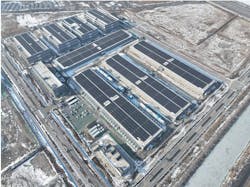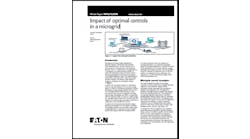Tencent, one of China’s largest technology companies, has commissioned a new microgrid at its High-Tech Cloud Data Center in Tianjin. With a total installed capacity of 10.54 MW, it is expected the microgrid will produce 12 million kWh of electricity per year – equivalent to the power consumption of 6,000 households – according to a statement from the company.
Data centers are notoriously power hungry, and that appetite is increasing exponentially as artificial intelligence (AI)-driven programs grow in popularity. AI applications require considerably more computing power than traditional computer programs.
Increasingly, data center operators are turning to microgrids to improve electric resilience, lower energy costs and achieve sustainability goals.
Data centers that double as power plants
To power its operations, Tencent, an internet, cloud computing and technology company that is perhaps best known outside of China for its video games, e-commerce and social media platforms, has been installing photovoltaic panels on rooftops at its facilities across the country for several years.
The result is a total installed capacity of more than 50 MW as of 2023 and “data centers that double as power plants,” according to the company.
In addition to the large rooftop solar array, the Tianjin microgrid includes a battery energy storage system to manage the ebbs and flows inherent to solar energy generation.
An AI- and machine learning-enabled control system allows the company to “process data from multiple energy sources and predict future electricity demand and generation,” according to the company.
Tencent has committed to becoming carbon neutral by 2030 and expects to purchase more than 1.3 billion kWh of renewable energy in 2024.
“Renewable energy accounts for 54% of the annual electricity consumption of Tencent’s own data centers as of today, and more than 70% of [its] self-built campuses use green power,” the company said.
Data giants demand microgrid flexibility
While Tencent has focused on solar microgrids, other data center players are exploring microgrids powered by different types of lower emissions or zero emissions fuels.
Microsoft has demonstrated microgrids powered by hydrogen fuel cells in Wyoming and renewable natural gas in California, while Vertiv recently commissioned a microgrid powered by solar, hydrogen fuel cells and a battery energy storage system.
Track news on new data center microgrid projects. Subscribe to the free Microgrid Knowledge Newsletter.








